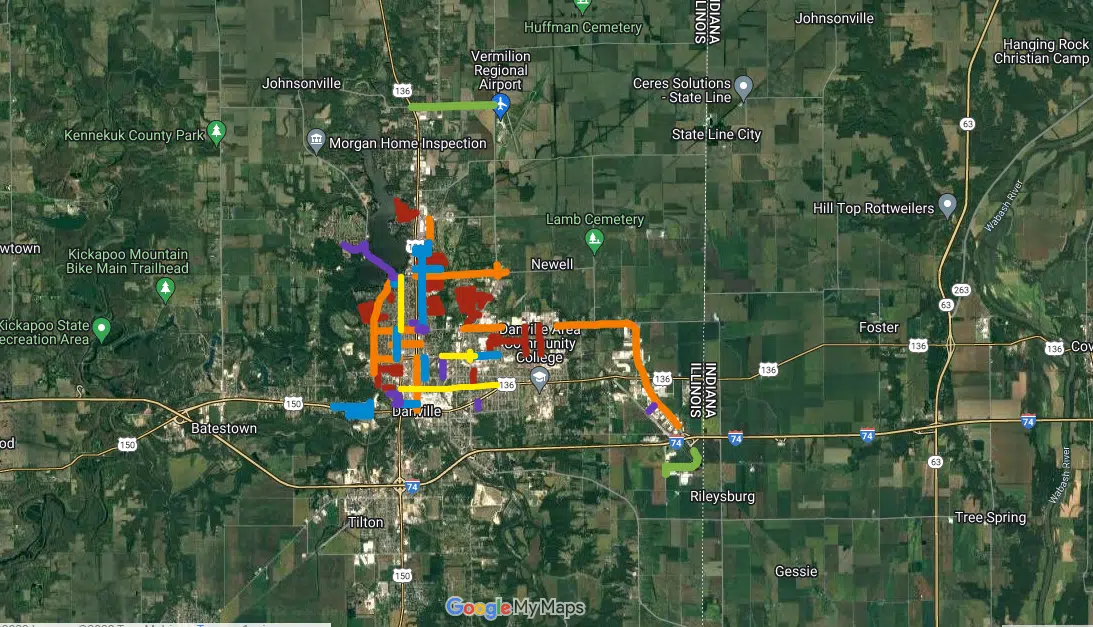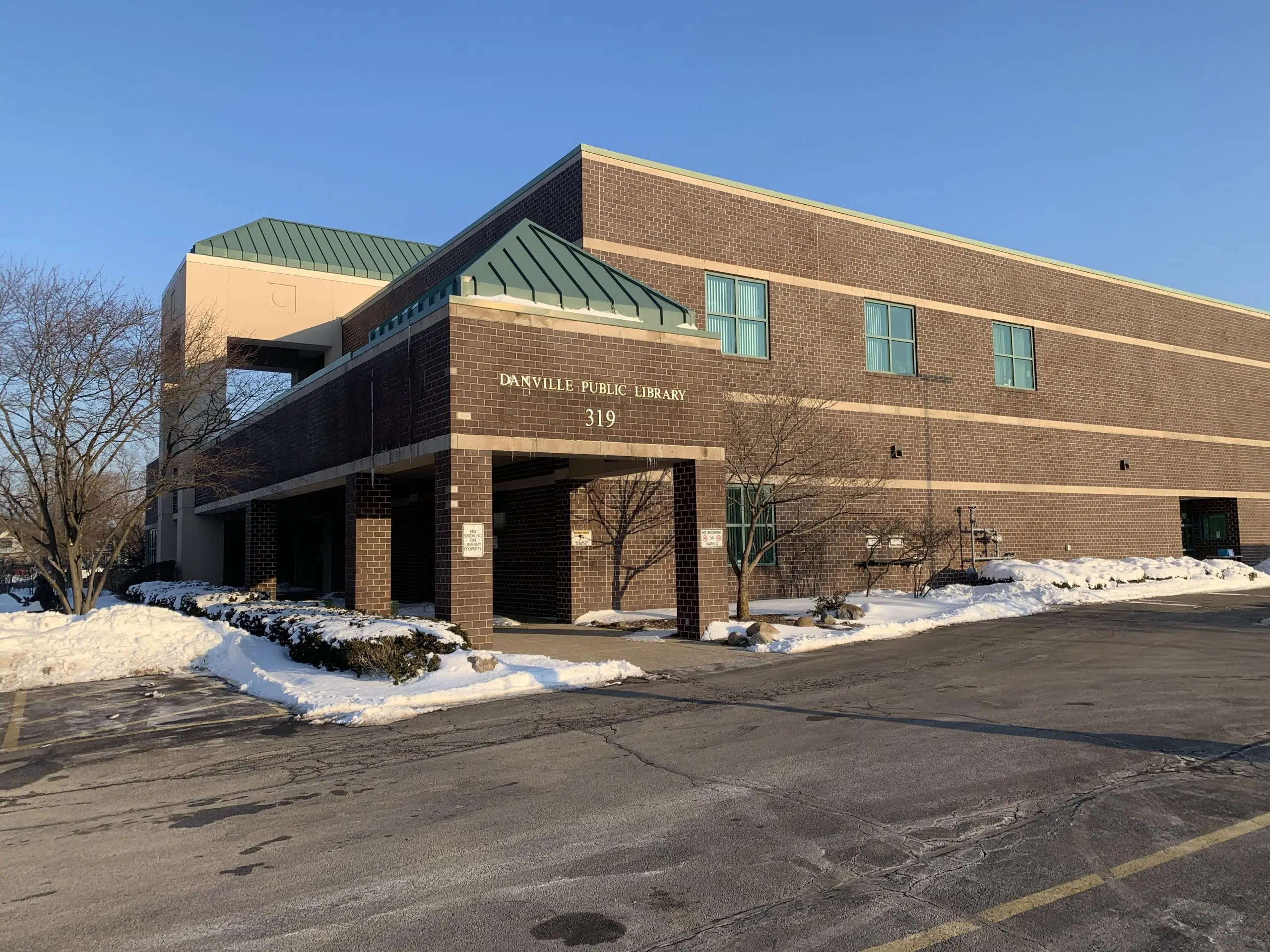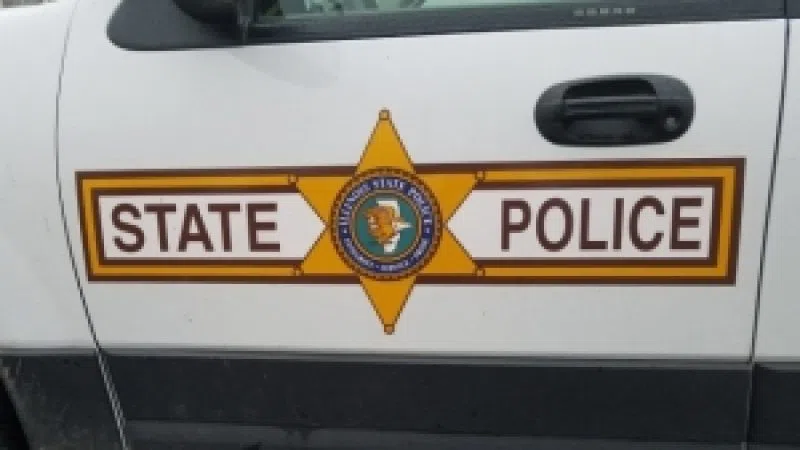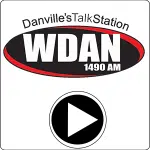THE FOLLOWING IS A CITY OF DANVILLE RELEASE
October 6, 2022 – As the City of Danville continues its efforts to preserve and maintain its roads; the City has received numerous questions, comments, and concerns about the gravel placed on many main roadways. While inconvenient and undesirable in the short term, the excess gravel on main roadways is a result of a recent sealcoat (chip seal). This excess gravel will soon be swept off the roadways in preparation for an additional preservation treatment known as micro surfacing. We are planning to sweep Vermilionand Voorhees (near Bowman Ave.) early next week. This micro surfacing layer in combination with the chip seal layer below it is known as a “cape seal”. Upon
completion of micro surfacing, the roadway will have a dark uniform and more traditional asphalt like appearance. These roads will also be restriped. The roads that are
yet to be micro surfaced and striped include portions of Logan Ave., Voorhees St., English St., Fairchild St. Vermilion St., Winter Ave., Bowman Ave., Townway, and
Griffin St. We recommend slowing down while driving on the newly treated roads to avoid heavy dust.
The benefits of a cape seal are many, but one major benefit is the value provided to the citizens. This year, the City is cape sealing over 27 lane miles of roadway for a total cost of around $1.9 million. The estimated life expectancy of these improvements is 8-10 years. If the City were to mill and overlay these streets with 2.25” of asphalt, the cost of this work would be approximately $12 million, and would have a life expectancy of 12- 15 years. In the end, the cape seal method is one-fourth of the cost per year of pavement life when compared to an overlay. Strategic pavement preservation is the cornerstone of the City’s strategy to preserve its good roads so that it can strive to reconstruct the failing roads, curbs, and sidewalks. In the current budget year, the City is able to spend $1.2 million on infrastructure improvements from the local motor fuel tax and $1.5 million in transportation improvements from the state motor fuel tax. In all, normal funding would pay for the following quantities of the various treatments.
0.5 – 1 mile of road reconstruction, or
3.5 – 5 miles of mill and overlay, or
10 – 20 miles of pavement patching, or
16 – 21 miles of cape sealing, or
43 – 50 miles of sealcoat (chip seal), or
125 – 167 miles of crack sealing.
Overall, the City of Danville is responsible for 354 lane miles (approximately 3 million square yards) of roadway pavement. This number, which does not include City owned
park roads or parking lots, makes up about 6%, or 1.1 square miles, of the total area of the City limits. At the City of Danville, our goal is to provide the right pavement
treatment, in the right place, and at the right time. Doing so helps ensure that road funding goes as far as possible, ensuring that taxpayers get the most “bang for their buck”
and that we are preserving large investments made in the past. Danville Public Works is prioritizing pavement maintenance and replacement track by developing a pavement management strategy that includes roadway asset inventory, condition assessment, and a
preservation/replacement strategy.
While the many roads are too deteriorated to attempt preservation, we cannot ignore maintenance and focus only on replacement of failed roads. Such an approach would lead to even more failed roadways. Fortunately, with preservation, we hope to maintain what is in fair or good condition so that we can afford to replace those roads where significant replacement is the only option.
Below is a brief summary of pavement treatments that we are utilizing in 2022 and a bit more about them:
Treatment Lane Miles % of Road Network
Crack Sealing 21.6 6.1
Seal Coat 22.9 6.5
Cape Seal 27.2 7.7
PCC Patching 2.1 1.2
Mill & Overlay 0.6 0.2
Reconstruction 4.5 1.3
Total 78.9 23.0
2022 Road Construction Map: https://www.google.com/maps/d/edit?mid=1-AzhPQqTNGnQiuItFRNVSg7PiKyBsb3K&usp=sharing
Crack Sealing: Larger cracks in asphalt or concrete pavement are routed and cleaned followed by placement of a flexible sealant. The sealant prevents water
from entering through the cracks where it can result in pavement failures due to softening subgrade, freeze/thaw cycles, corrosion, and separation of pavement
layers. This is the lowest cost and most cost effective preservation method that we have.
Cost: $1 per foot of crack ($15,000 – $20,000 per mile)
Life extension of roadway: 3-5 years
Traffic down time: less than 1 hour
Sealcoat (Chip Seal): Consists of an application of a thin layer of asphalt binder (oil) followed by a thin application of stone (chips). We apply this treatment to
roadways that were originally constructed as sealcoat roads, which is the case for one-third of City streets, or as a preservation treatment on asphalt pavements.
Cost: $3-$3.50 per square yard ($50,000 – $58,000 per mile)
Life extension of roadway: 5-7 years
Traffic down time: less than 1 hour
Cape Sealing: The treatment is applied to asphalt roads that are in fair to good conditions. Cape seal consists of a chip seal treatment followed by a micro
surfacing treatment which is intended to seal cracks, improved skid resistance, seal the pavement, protect against oxidation, and restore a uniform appearance.
Cost: $7 – $9 per square yard ($120,000 – $150,000 per mile)
Life extension of roadway: 7-10 years
Traffic down time: less than 2-4 hours
Concrete Patching: The treatment involves removal of existing failed portions of pavement and replacement with new concrete pavement. Typically, this is
limited to concrete pavements in which the failures are severe enough that other more temporary patching methods are not adequate.
Cost: $150 – $200 per square yard patched ($125,000 – $250,000 per mile)
Life extension of roadway: 5-15 years
Traffic down time: several days
Mill & Overlay: The treatment is performed on asphalt roads that are in poor condition. First, the surface of the existing pavement is ground off (milled) to
remove defects and deteriorated asphalt pavement (usually to a depth of 2-3 inches) and then a new asphalt pavement surface is paved. At times, just an
overlay without milling, is placed on concrete streets to extend pavement life before reconstruction is required. While this looks like new pavement, it relies on
the existing pavement and base for support.
Cost: $30 – $40 per square yard ($500,000 – $700,000 per mile)
Life extension of roadway: 12-20 years
Traffic down time: several days to weeks
Reconstruction: When pavement has reached a failed condition, often times the only long term solution is some form of reconstruction. Reconstruction usually
impacts the road, sidewalks, driveways, curbs, and utilities present. Reconstruction methods vary but are very disruptive and costly, so they are
reserved to cases in which other options are not viable.
Cost: $150 – $300 per square yard ($2,500,000 – $5,000,000 per mile),
including design and construction management
Life extension of roadway: 30-50 years
Traffic down time: Can range from a few months to a few years.












